The most innovative projects of the IISPV have been present these days at the Mobile World Congress, in Barcelona. Specifically, we have brought RetinaReadRisk, Emma Molds, Biosfer Teslab and RecurDetect
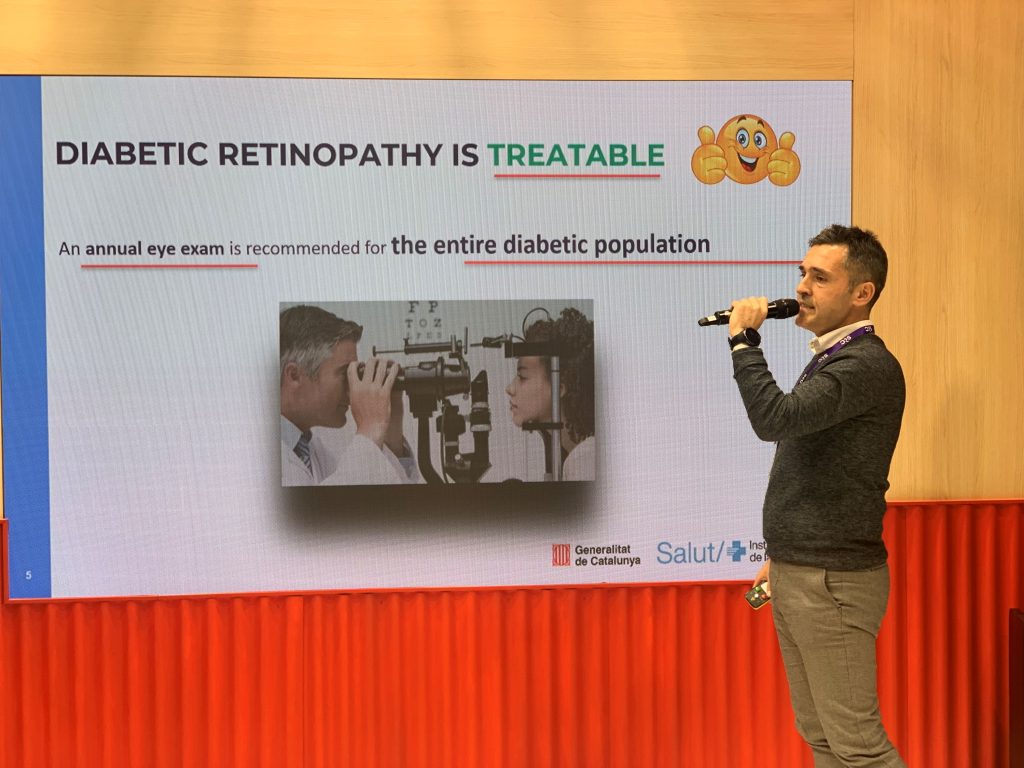
RetinaReadRisk integrates software and a mobile system based on artificial intelligence to detect and treat diabetic retinopathy in time. In Catalonia, the test to detect it (consists of examining the fundus of the eye with a non-mydriatic camera) is carried out in certain primary care centers (CAP), located mainly in cities. The spin-off that bears the same name as the project has been created to integrate this technology throughout the Catalan public health system, so that people could be examined by their family doctor without having to travel. More information here
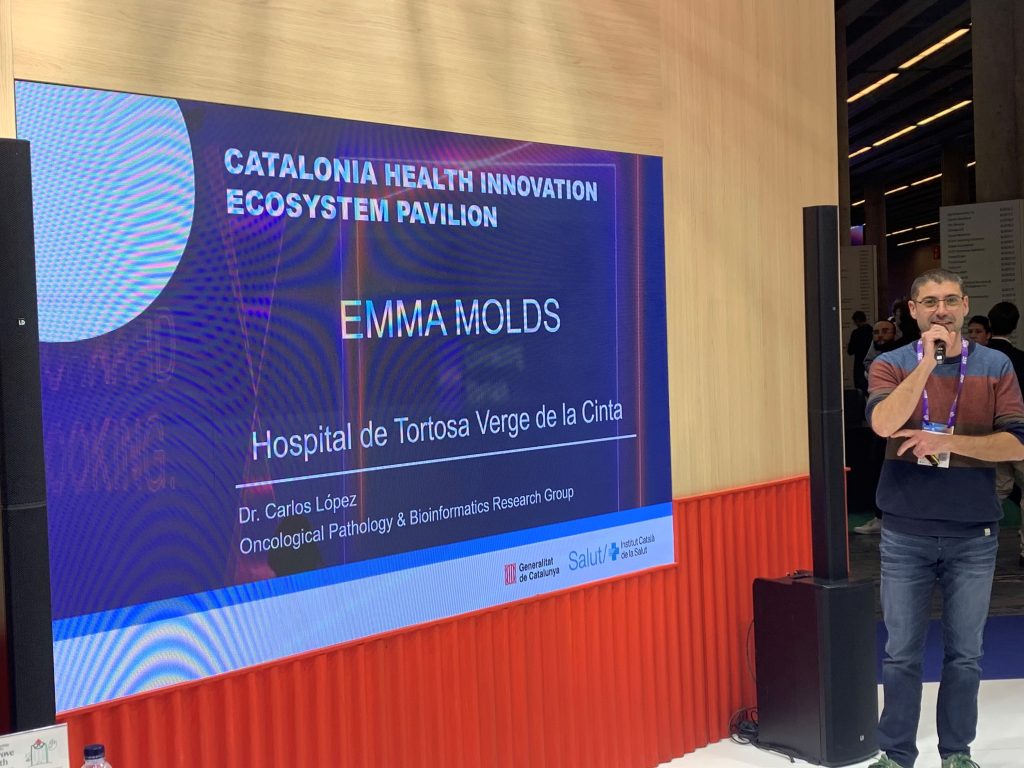
The Emma Molds project has also been presented at this congress, which was born from the joint work of researchers from the Oncological Pathology and Bioinformatics Research Group of the IISPV (based at the Tortosa Verge de la Cinta Hospital) and professors from the Institut de l ‘Ebre (IE). Emma Molds was born with the vocation of devising and manufacturing paraffin molds known as tissue microarrays or TMAs (for its acronym in English), achieving an improved version of the one that currently exists on the market, so that each one of them can be more easily manipulated by the researcher. These molds are some of the most used in the field of research for the analysis of stains from patient biopsies. Its design allows a greater number of samples to be analyzed, while helping to quickly identify markers that indicate the prognosis of a disease. More information about the Emma Molds project here
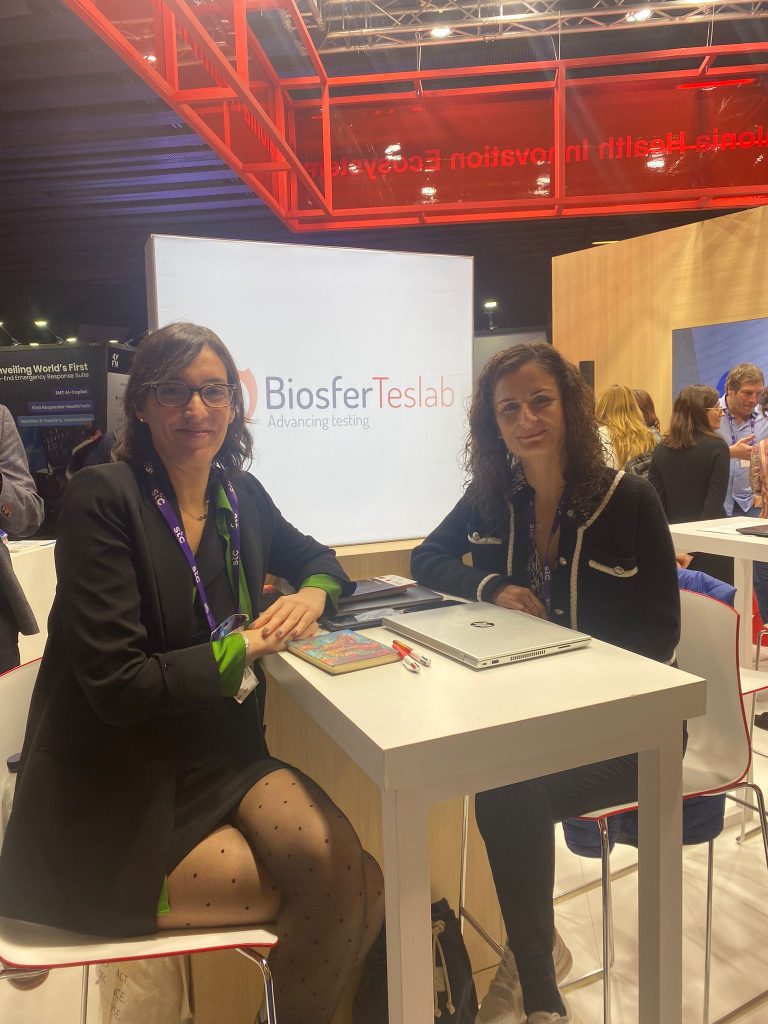
On the other hand, Biosfer Teaslab, a spin-off of the Institute of Health Research Pere Virgili (IISPV) and the University Rovira i Virgili (URV) that operates in the field of in vitro diagnosis, was also present at this year’s Mobile Congress to offer analytical services to study and control alterations in lipid metabolism and their associated cardiovascular risk. Biosfer aims to reduce the time between basic scientific results and their future application in patients. It wants to become a European reference company in the analysis of biofluids using high-performance Nuclear Magnetic Resonance (NMR). More information

The researcher Maria Llambrich (Oncological, Translational, Epidemiological and Clinical Research Group -GIOTEC) of the IISPV and the Hospital Sant Joan de Reus presented the RecurDetect project (www.recurdetect.com), a non-invasive urine test for the diagnosis of recurrence/metastasis of colorectal cancer. This presentation (led by Xartec Salut) took place within the framework of the event called 4YFN, which brings together startups and different innovative projects of the Mobile World Congress, and which acts as a platform for digital business in this area, with 800 exhibitors and 350 speakers. More information on the GIOTEC group
It has obtained €150,000 after passing a competitive process to which more than 100 projects have been submitted, only in Cataloniaia
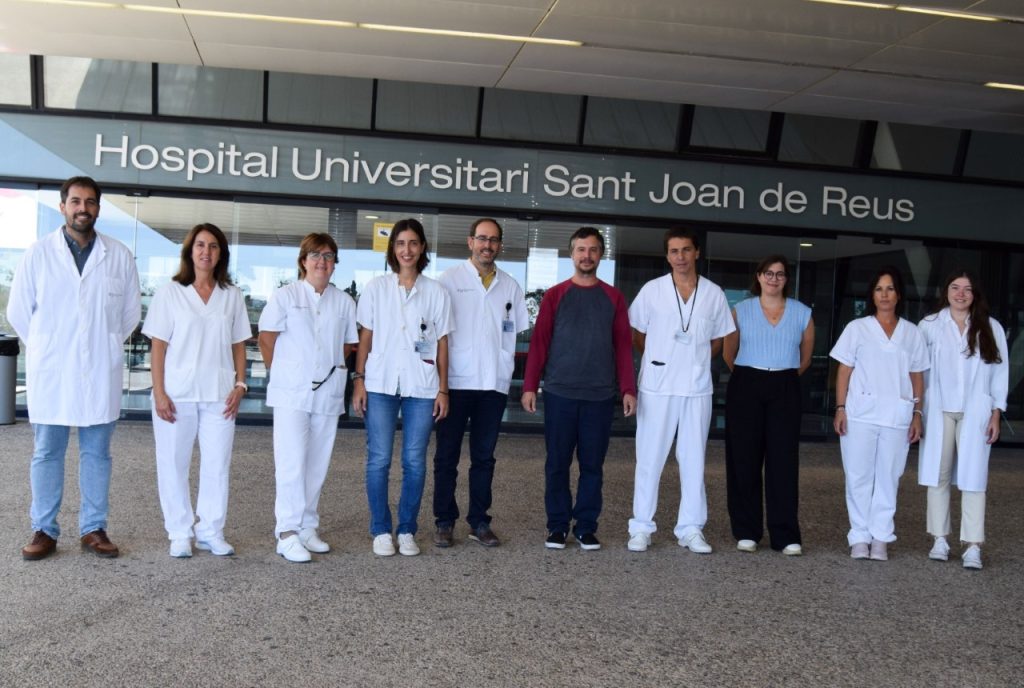
The project “Validation of an innovative electrode for babies with a guided positioning system (aCUP-E and EPlacement solutions)” by the NeuroÈpia research group (from the Pere Virgili Health Research Institute and from the Hospital Universitari Sant Joan de Reus) has obtained €150,000 under the Strategic Plan for Research and Innovation in Health 2022-2027 (PERIS) of the Department of Health of the Generalitat de Catalunya. It is a very call competitive to which, only in Catalonia, 104 projects have been submitted, of which only 14 have received funding.
The Clinical and Epidemiological Neuroscience research group (NeuroÈpia) has different lines of research, including Clinical Neurophysiology, led by Dr. Vicenç Pascual, coordinator of the Clinical Neurophysiology Service of the Hospital Universitari Sant Joan de Reus, and which, through the Neurally platform, has set itself the goal of creating medical devices related to clinical neurophysiology to bring them to the market and, thus, to improve clinical practice in this scientific field.
NeuroÈpia’s Clinical Neurophysiology research line is made up of a multidisciplinary group, which includes clinical neurophysiologists: Dr. Vicente Pascual, Gisel Montoya and Salvador de la Torre; neonatologists: Dr. Susana Larrosa and Dr. Julia Arroyo; nurses: Vanesa Rius, Montse Roselló and Elena González; engineers: Dr. Albert Fabregat (URV), Dr. Rosa Pàmies (URV) and Dr. Rosa Pàmies (URV). Susana Larrosa and Dr. Julia Arroyo; nurses: Vanesa Rius, Montse Roselló and Elena González; engineers: Dr. Albert Fabregat (URV), Dr. Rosa Pàmies (UPC) of mechanical engineering and Agnès Rigo of biomedical engineering; and the entrepreneur Ismael Ávila.
More information about NeuroÈpia
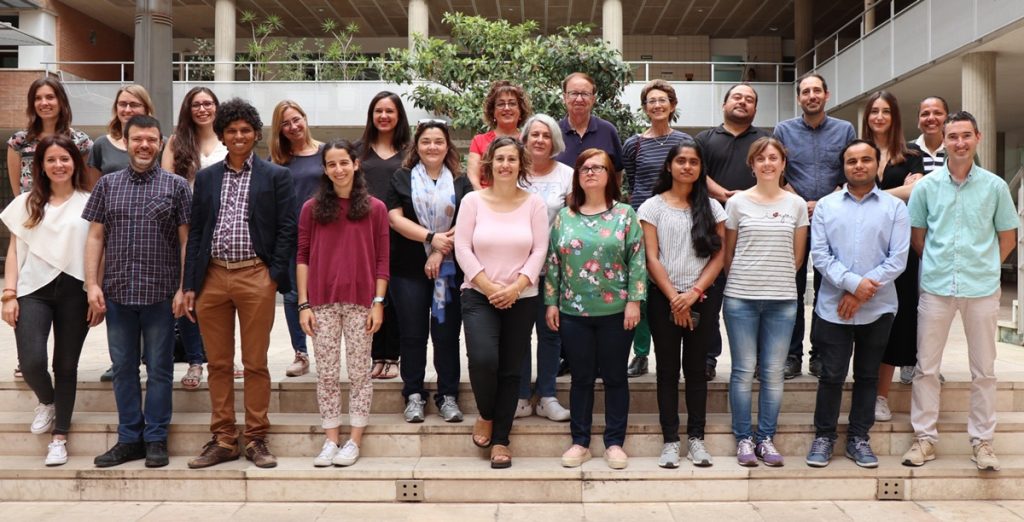
Tarragona, January 23, 2024. A European study involving researchers from the IISPV-CERCA-URV will investigate the impact of chemical substances called endocrine disruptors (EDCs, for their acronyms in English) on the reproductive health of men and women. The study, called MERLON, aims to identify which of these chemicals, specifically, affect fertility, in addition to learning about the cellular mechanisms that take place when the function of a part of our body is altered as a result of accumulation of these components. Endocrine disruptors can block hormone receptors in cells preventing the normal action of hormones and thus causing disruption (alteration) of the endocrine system.
Within the MERLON project, the research group of the Environmental, Food and Toxicological Technology Center (TECNATOX) of the IISPV-CERCA-URV will be responsible for developing what are known as predictive models, which can be understood as algorithms or computer patterns based on information about biochemical interactions and biological mechanisms, taken from the study of animals and humans. These models will be used to predict the risks that these pollutants can represent for a person’s reproductive health. Establishing these predictive models as a basis for predicting these risks will help to decrease, little by little, the use of animals in this type of studies. This is precisely one of the challenges currently facing the European Union; it has established it as one of the priorities for the coming years in the field of research.
MERLON study (it has been funded by the European Union within the framework of the Horizon Europe programme) is coordinated by the Danmarks Tekniske Universitet (Denmark). The following institucions are involved in it as partners: Stichting Vu and Rijksinstituut Voor Volksgezondheid En Milieu (Netherlands); Karolinska Institutet (Sweden); Institut National de la Santé et de la Recherche (France); Region Hovedstaden (Denmark); Universite de Liege and Health and Environment Alliance (Belgium); the University of Córdoba (Spain); and the Norsk Institutt for Vannforskning (Norway).
These chemicals are found in many everyday products: in food packaging materials, in non-stick cookware, in substances added in the manufacture of furniture, plastics, textiles and electronic equipment (they make them less flammable), etc.
For more information: comunicacio@iispv.cat
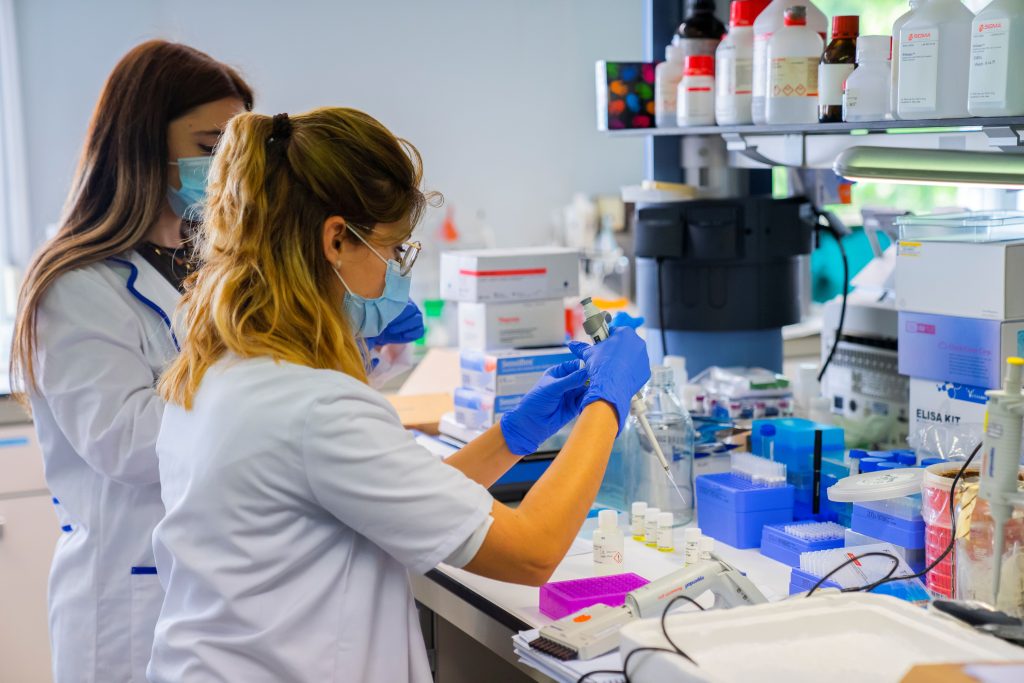
The Pere Virgili Health Research Institute (IISPV), the Girona Biomedical Research Institute Dr. Josep Trueta (IDIBGI) and the Biomedical Research Institute of Lleida Fundació Dr. Pifarré (IRBLleida) have received a total of 361,474 euros in the call for the Strategic Health Research and Innovation Plan (PERIS) 2022-2027 of the Department of Health, in order to maintain their joint internationalization initiative, the project Beyond GO_HERO.
The Beyond GO_HERO (Health European Research Offices) project, coordinated by the IDIBGI, began in 2023 and is scheduled to end on December 31, 2025. The proposal is presented as the consolidation of the international project units of the three centers , all of them members of the CERCA system of the Generalitat de Catalunya. The initiative seeks to train units with skills and knowledge to take the step towards increased leadership in proposals and in the number of proposals requested at international level. Another objective of the project is to train the research staff of the institutes in different key areas for the preparation of highly competitive quality projects.
This new project is the continuation of the GO_HERO project, which allowed the professionalization of the international project units of the three centers and their technical staff. The sum of efforts gave tangible results in all areas, such as an increase of more than 40% in the collection of international funds, such as the 25% increase in international proposals presented, the 5% increase in the success rate in calls for proposals, the diversification of funding sources, the increase in the number of international projects and more participation by the research groups of the three institutions.
The impact of the Beyond GO_HERO project will be significant as it will maintain the impetus for the three institutes to consolidate their presence in European and international research. This increase will contribute to strengthening Catalonia’s position within the European biomedical and clinical map, in addition to the possible inclusion in the European agenda of the particular health needs of the territory’s citizens.
This initiative is part of the existing collaboration agreement between the three institutes. Apart from having similar indicators of scientific production, the three regions share health challenges in providing coverage to a geographically dispersed population, older than that of the metropolitan areas and with less investment. This situation makes collaboration vitally important, not only between the institutes but with other European entities, to be able to offer solutions to existing challenges in health, both regionally and internationally.
For Dr. Marga Nadal, director of the IDIBGI, “the GO_HERO project proved to have an impact on the participating institutions in terms of the number of proposals presented and funded. Now the GO_HERO project seeks excellence, professionalization and the leap towards the leadership of international proposals”.
According to Dr. Joan Vendrell, director of the IISPV, “this continuity of the joint project will position the participating centers in a prominent place on the biomedical map of Catalonia with a remarkable international projection and very valuable for our territory”.
For Dr. Diego Arango, director of the IRBLleida, “thanks to the project we will boost the attraction of international funding through participation and leadership in competitive consortia and we will strengthen institutional relations”.
About the IISPV
The Pere Virgili Health Research Institute (IISPV) is a research institute created in 2005, to manage biomedical and health research in the Camp de Tarragona and Terres de l’Ebre. The IISPV is participated by: ICS Camp de Tarragona with the University Hospital of Tarragona Joan XXIII, ICS Terres de l’Ebre with the Hospital Verge de la Cinta, the University Hospital Sant Joan de Reus, the Pere Mata Group and Rovira i Virgili University.
About the IDIBGI
The Biomedical Research Institute of Girona Dr. Josep Trueta (IDIBGI) is a CERCA center dedicated to translational, clinical and epidemiological research aimed at improving people’s health and care. With more than 400 researchers and researchers, which includes health professionals and basic researchers, it is organized into 22 research groups in five areas of health: Cardiovascular and Respiratory, Metabolism and Inflammation, Neurosciences, Oncohematology and Mental Health. The IDIBGI is linked to the main healthcare institutions in Girona, such as the Trueta Hospital in Girona and the Santa Caterina Hospital in Salt.
About the IRBLleida
The Biomedical Research Institute of Lleida Fundació Dr. Pifarré (IRBLleida) was created with the aim of creating synergies between basic, clinical and epidemiological research, making biomedical research a key driver for improving current clinical practice. The IRBLleida covers a chain of translational research, from basic research, aimed at understanding the physiological and pathological mechanisms of the human body, to research that studies the behavior of diseases in large population groups.
More information
| Unitat de Comunicació IISPV A/e: comunicacio@iispv.cat 977 75 93 94 (Hospital Sant Joan de Reus) | 977 29 58 00 (Hospital Joan XXIII de Tarragona) | Unitat de Comunicació IDIBGI A/e: comunicacio@idibgi.org 872 987 087 Ext. 15 | Unitat de Comunicació IRBLleida A/e: comunicacio@irblleida.cat 973 702 479 |
This five-year project is financed by the EU, is coordinated by ISGlobal and has the collaboration of the IISPV (Clinical and Epidemiological Neuroscience Research Group -NeuroEpia-). It will focus on the implementation and evaluation of interventions in key industries in Europe
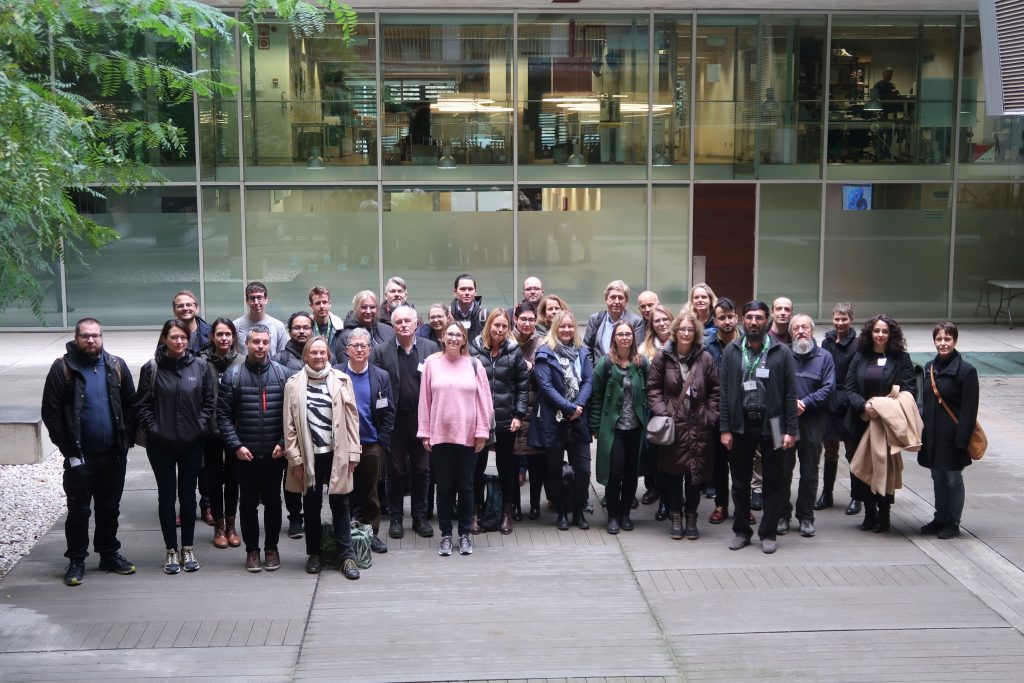
In response to growing concerns about the impact of climate change on occupational health, INTERCAMBIO, a five-year project, has been launched to understand and address these challenges in Europe. The initiative aims to promote the mental and physical health of workers in changing work environments due to the effects of climate change.
The project was launched on 10 January at the Barcelona Biomedical Research Park (PRBB). Coordinated by the Barcelona Institute for Global Health (ISGlobal), INTERCAMBIO is financially supported by the European Health and Digital Executive Agency (HADEA) and the European Union’s Horizon Programme. It involves a consortium of 13 partners (among them the Pere Virgili Health Research Institute and, specifically, the Clinical and Epidemiological Neuroscience Research Group -NeuroEpia-), from 8 European countries.
INTERCAMBIO will address key issues related to the mental and physical health of workers through detailed evaluations of interventions in strategic industries across Europe that are relevant to the green and digital transitions. The areas for these interventions include outdoor construction, healthcare, public transport, renewable energy and waste management.
The project will also use large-scale, geographically diverse, longitudinal consortia to conduct further climate-related research. “We hope that our findings will be of significant scientific and societal relevance and can support the formulation of new policies in the field of occupational health,” says Michelle Turner, ISGlobal researcher and coordinator of the INTERCAMBIO project.
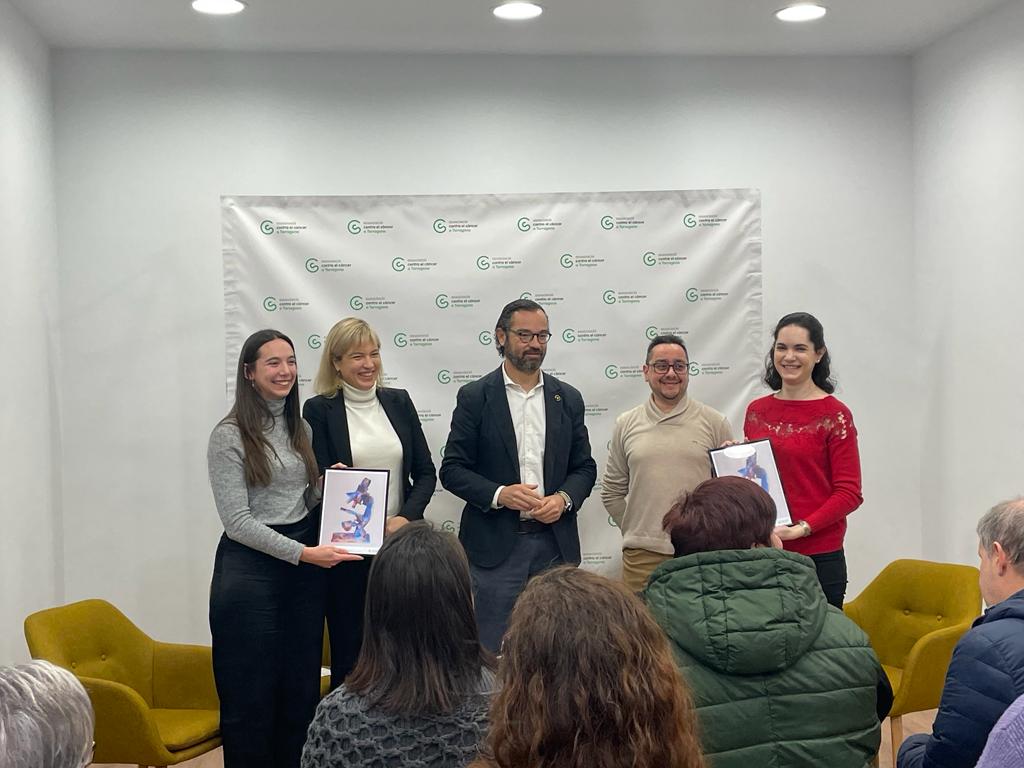
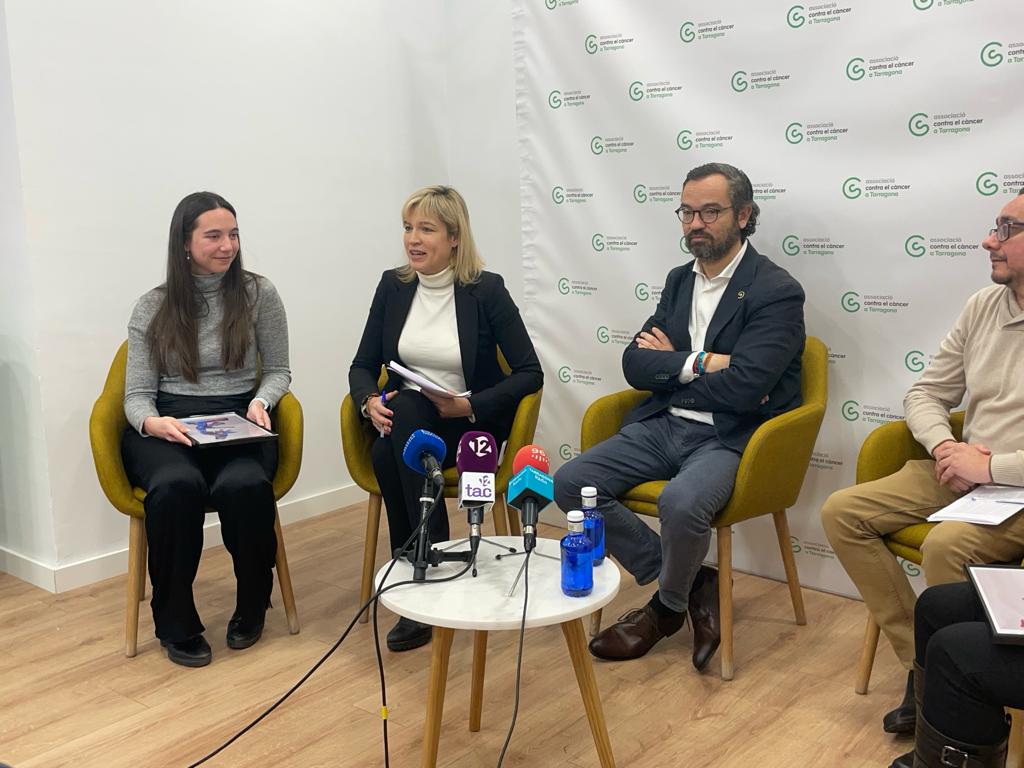
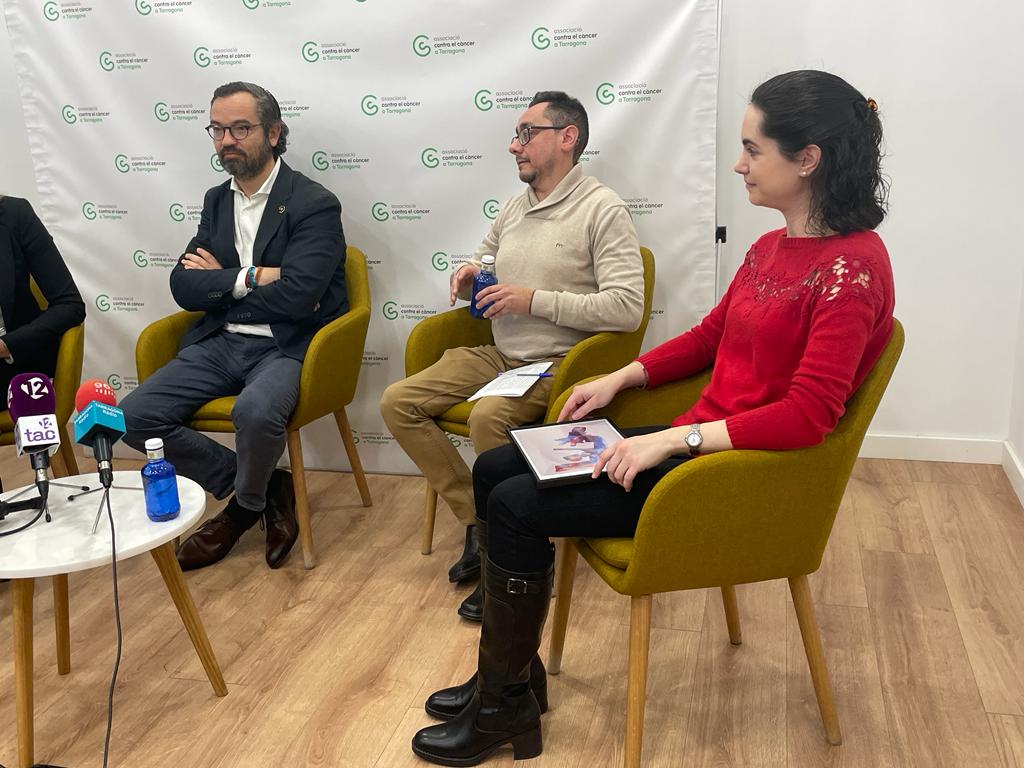
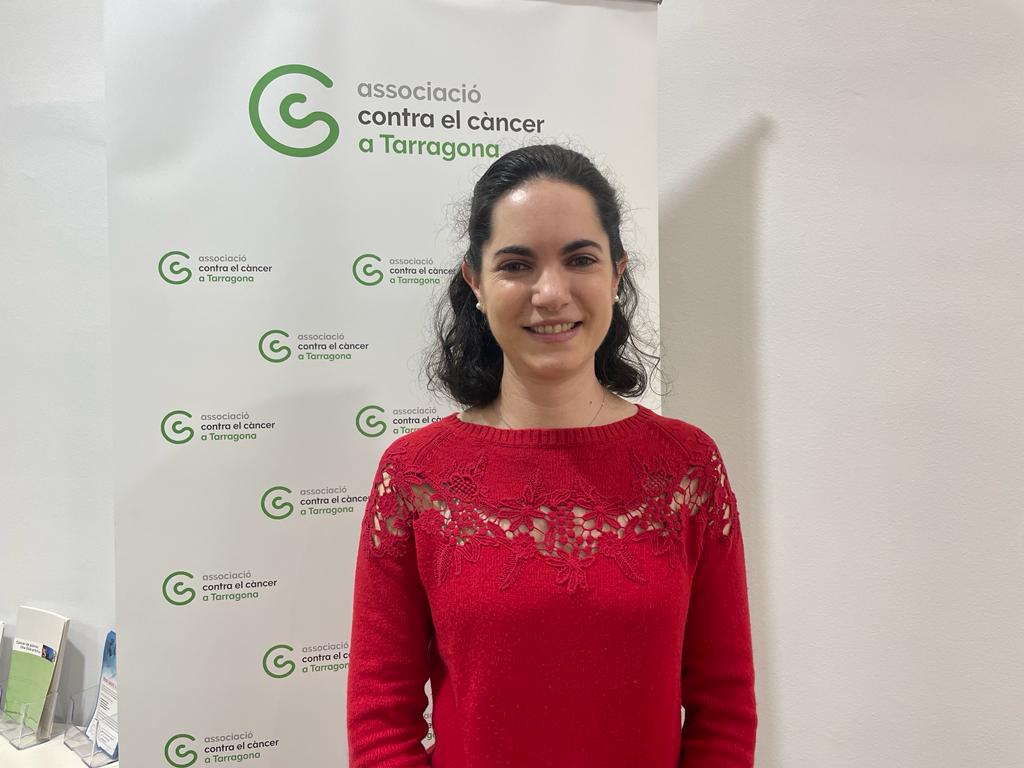
The Tarragona Association Against Cancer has invested part of the funds from its 2023 Research Grants programme in a project of the IISPV’s Radiotherapy Oncology Research Group to research cancer and to contribute to increasing the average survival rate of cancer sufferers to 70% by 2030 (another of its key objectives).
The Association Against Cancer in Tarragona helped to fund a project led by IISPV researcher Raquel García with a budget of 140,000 euros. This project (with a duration of four years) is focused on creating a model to predict the response of metastases treated with radiotherapy using imaging tests and blood markers, with the ultimate goal of being able to personalise treatments for each patient and improve their quality of life and survival in the disease.
Specifically, this project will study which patients with metastases may respond best to SABR (stereotactic ablative radiotherapy), which is a very precise type of radiotherapy in which high doses of radiation are delivered to the tumour while protecting the surrounding healthy organs as much as possible.
The research will also use artificial intelligence to combine the results of imaging tests with the results of each patient’s blood tests, so that a personalised predictive model can be created for each cancer patient with metastases who will receive SABR.
At the award ceremony for the 2023 Research Grants, Dr Raquel García said: “Our project consists of developing a model that allows us to predict how patients with different types of cancer and metastases will respond to ablative stereotactic radiotherapy sessions; it is very precise and delivers high doses of radiation while protecting the surrounding healthy organs”.

El Grup de Recerca en Diabetis i Malalties Metabòliques Associades (DIAMET) de l’IISPV acaba de publicar un article de revisió a la prestigiosa revista Diabetologia (referent en l’àmbit de la diabetis; és la revista oficial de l’Associació Europea per a l’Estudi de la Diabetis -EASD-). Porta per títol Type 2 diabetis and succinate: unmasking an age-old molecule i resumeix l’estudi de DIAMET sobre la implicació del succinat i del seu receptor SUCNR1 en el desenvolupament d’aquesta malaltia i d’altres complicacions associades.
Els responsables de DIAMET la Dra. Sonia Fernández-Veledo i el Dr. Joan Vendrell i la investigadora d’aquest grup Anna Marsal signen aquest article. Tots ells estan vinculats als Centres CERCA de Catalunya, al CIBERDEM (Centro de Investigación Biomédica en Red de Diabetes y Enfermedades Metabólicas Asociadas) i a la URV.
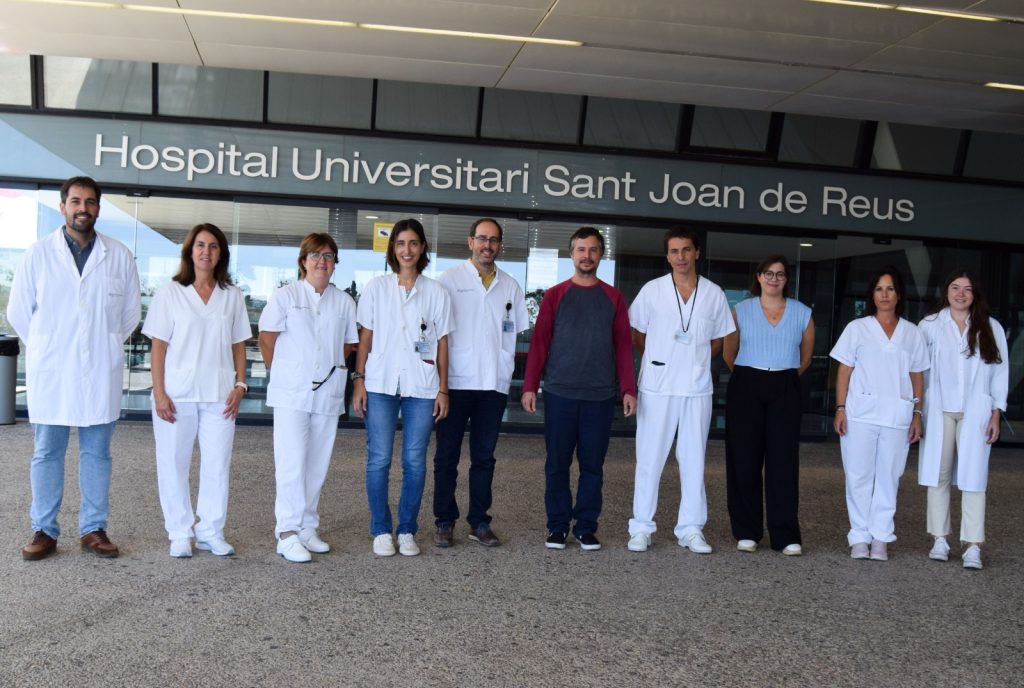
Reus, January 10, 2024. The Clinical and Epidemiological Neuroscience Research Group (NeuroEpia) of the Pere Virgili Health Research Institute (IISPV) will lead an international project to study the influence of nuts and especially wallnuts in the neuropsychological development of children. For this study, 1,000 pregnant women who live in the Barcelona area are being monitored (in scientific language, the group of people analyzed in an observational project is called a cohort study, and, in this case, it is known as the name of BiSC!), along with their sons and daughters (until they are 18 years old, approximately).
So, this is a very complete investigation, which will allow to scientifically study the recommendation of these foods (which are key to the proper functioning of the brain and mental abilities) to promote cognitive health from the initial stages of life (the fetal period) and until the adolescent age.
Walnuts are rich in alpha-linolenic fatty acid (ALA), a type of omega-3 that plays a fundamental role in brain development, especially during the gestation period: “At this stage, major biological changes occur, necessary for the formation of the brain and so that it can then function properly during childhood and adolescence, periods also important for learning”, explains Jordi Julvez, principal researcher of the study and coordinator of the NeuroÈpia Research Group of the IISPV. And he emphasizes: “Neurons well fed with this type of fatty acids will be able to grow and create new synapses in the future, which will be probably stronger.”
This study (Walnut Intake in Pregnant Women and Infant Neurodevelopment) is being carried out in collaboration with the Barcelona Institute for Global Health (ISGlobal) and is funded by the California Walnuts Commission (a world reference institution in this field).
What is neurodevelopment?
According to Ariadna Pinar, pre-doctoral researcher of the project: “It is the development of the cognitive or mental capacities that we acquire in the different stages of growth and that depend on the good health of our brain. One of the indicators that determine the degree of maturation is the intelligence coefficient. We can already obtain brain growth data from the time the embryo begins to form, and the first cognitive tests can be done on the baby in the first month of life. It refers to the child’s motor skills, attention and language skills, etc. Cognitive function is one of the foundations of the human being behavior, in short, and it is essential for the development of their autonomy and well-being.”
For further information: comunicacio@iispv.cat
A study carried out by the Food, Nutrition, Development and Mental Health Research Group of the Rovira i Virgili University (URV), the IISPV and the CIBEROBN in collaboration with the Temerty Faculty of Medicine of the University of Toronto (Canada) shows that eating a wide variety of fruits and vegetables (regardless of the quantity) is associated with greater longevity and at the same time a lower risk of developing obesity and hypercholesterolemia.
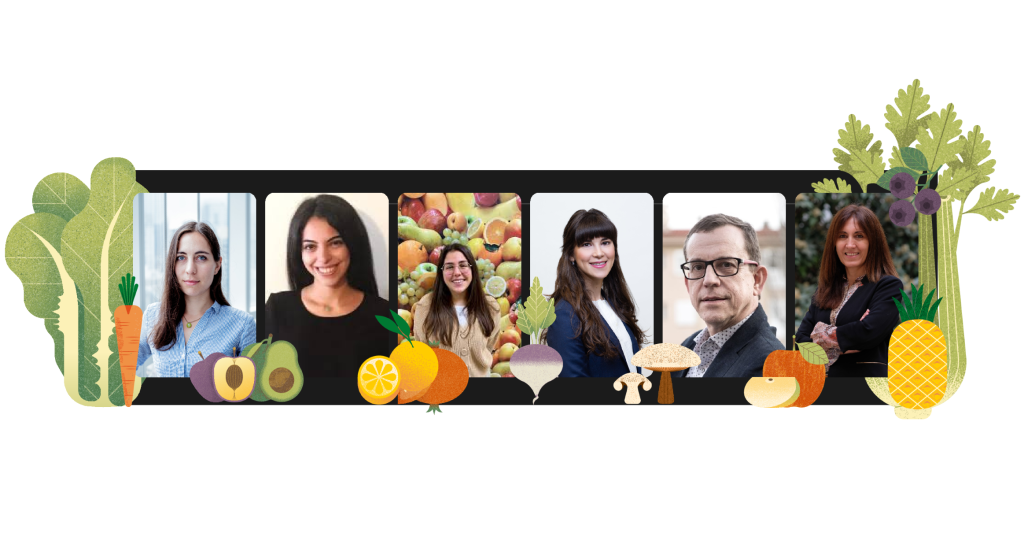
Variety of vegetable and fruit intake can be important for our health. Eating a greater variety of vegetables and fruits could reduce all-cause mortality, as well as risk factors for cardiovascular diseases, specifically obesity and hypercholesterolemia.
These are findings of an internationally conducted study by the Unitat de Nutrició Humana, Grup Alimentació, Nutrició, Desenvolupament i Salut Mental of the Rovira i Virgili University (URV), the Pere Virgili Health Research Institute (IISPV) and the Centro de Investigación Biomédica en Network de la Fisiopatología de la Obesidad y Nutrición (CIBEROBN), in collaboration with the Temerty Factuly of Medicine of the University of Toronto (Canada), which examined the association between the variety in the consumption of vegetables and fruits and cardiovascular health and mortality. Along with these findings, the need for additional studies exploring the importance of variety in vegetable and fruit intake on cardiovascular health was highlighted.
Although there are a large number of scientific studies that support the importance of consuming a large amount of vegetables and fruits (5 servings a day) due to their cardioprotective qualities and other healthy qualities, until now there was a lack of clear scientific evidence on the importance of consuming a greater variety of fruits and vegetables in the diet and their impact on health. The present study addresses this gap in evidence that had been noted by health authorities, including the European Food Safety Authority (EFSA). Assessing the impact of variety of vegetables and fruits on cardiovascular health and mortality has important clinical implications, as it may aid in informing the development of future dietary strategies to prevent or delay mortality and promote healthy aging.
To investigate this gap in knowledge, the researchers of this study conducted a systematic review and meta-analysis of observational studies summarizing all available evidence. Through this method, all relevant scientific evidence is collected and statistical methods are applied to synthesize the results. In addition, the Grading of Recommendations Assessment, Development, and Assessment (GRADE) approach was applied, which makes it possible to assess the certainty of the scientific evidence obtained with the scientific results. This tool has been adopted by more than 100 major organizations worldwide, including the World Health Organization, to make recommendations on clinical practices and health policies.
With the present systematic review of the studies published to date, a meta-analysis of 12 unique observational studies was carried out, involving almost 300,000 participants, with a complete evaluation of the certainty of the evidence on the impact of the consumption of a variety of vegetables and fruits on cardiovascular health and all-cause mortality. The analyses showed that consumption of a greater variety of vegetables and fruits was associated with an 11% lower risk of mortality from all causes. In addition, a higher intake of varied vegetables and fruits was also associated with a lower risk of obesity and hypercholesterolemia.
Although this evidence supports that, regardless of the quantity, the variety in the intake of fruits and vegetables is beneficial for health and improves life expectancy, the authors specify that additional studies with a higher level of evidence are necessary to better understand the importance of the reported associations.
According to Dr. Stephanie Nishi, first author of this study, “Dietary diversity, as illustrated by increased fruit and vegetable variety, has long been recognized as a key component of diet quality. Vegetables and fruits, in general, are rich in nutrients; however, consuming a combination of different varieties of fruits and vegetables that have different nutrients, amounts of nutrients, or bioactive components could have superior health benefits. So to speak, they could act as an orchestra where the combination of different musical instruments (in this case fruits and vegetables) achieves a better symphonic sound”.
According to Dr. Jordi Salas-Salvadó, “This research builds on a previous study by the PREDIMED-Plus team that illustrated in more than 6,500 participants that greater variety in fruit and vegetable intake was associated with higher diet quality and a healthier lifestyle in an older Mediterranean population”.
Dr. Nancy Babio, a senior author of the study, said, “While there is some scientific evidence about the importance of consuming enough fruits and vegetables in relation to health, this study is the first to summarize the evidence related to the variety “.
This work, published in the scientific journal Nutrients, has been carried out by the Unitat de Nutrició Humana, Grup Alimentació, Nutrició, Desenvolupament i Salut Mental of the Department of Biochemistry and Biotechnology of the URV by Dr. Stephanie Nishi, Visiting Professor and Canadian Institutes of Health Research (CIHR) Postdoctoral Fellow, in collaboration with predoctoral researchers Nadine Khoury and Cristina Valle Hita, and senior authors Dr. Jordi Salas-Salvadó, Professor of Nutrition and Bromatology at the URV and Director of the Unit and Dr. Nancy Babio, Associate Professor. All these authors are part of CIBEROBN and IISPV. Along with international collaboration with Dr. Andreea Zurbau, Postdoctoral Fellow in the Department of Nutritional Sciences, Temerty Faculty of Medicine, University of Toronto.
Bibliographic reference: Nishi, S.K.; Khoury, N.; Valle Hita, C.; Zurbau, A.; Salas-Salvadó, J.; Babio, N. Vegetable and Fruit Intake Variety and Cardiovascular Health and Mortality: A Systematic Review and Meta-Analysis of Observational Studies. Nutrients 2023, 15, 4913. https://doi.org/10.3390/nu15234913

Tarragona, November 13, 2023. A study published in the journal The Lancet Psychiatry (the most prestigious in the field of psychiatry) and which included the participation of IISPV researcher Jordi Julvez, has confirmed that the first diagnosis of Attention Deficit hyperactivity Disorder (ADHD) is as reliable as it is later in life. This work refutes the belief that has recently prevailed in the scientific community about the diagnosis of this disorder in preschool ages (from 3 to 6 years) may not be reliable since the behaviors inherent to these young children (the central nervous system is still developing and it is not enough mature) can be confused with the symptomatology of the ADHD.
The research has collected the results of 41 cohorts or studies carried out in 15 different countries, with a total sample of 4,708 children with ADHD. It is the largest longitudinal study carried out to date in this field: these children have been followed for a minimum of 4 years and, in some cases, they have been evaluated over a period of 33 years. Jordi Julvez, the IISPV researcher who participated (leads the Clinical and Epidemiological Neuroscience Research Group, also known by its acronym: NeuroÈpia) points out that “the study conclusions show us not to be afraid of making mistakes in the diagnosis of ADHD if we assess them at an early age; in addition, we must take into account that detecting the ADHD early in life will allow the child to start psychotherapy treatment earlier; the younger the boy or girl, the more plastic his/her brain is”.
The scientific literature that exists around this topic indicates that the most appropriate ages for the diagnosis of ADHD are from 7 to 8 years old, so this contribution represents a paradigm shift in the approach to the disorder and in the perception of its early symptoms.
According to the World Health Organization (WHO), between 4% and 6% of the world’s population is diagnosed with ADHD disorder.
This study has been led by the researchers Samuele Cortese, from the Centre for Innovation in Mental Health (Faculty of Environmental and Life Sciences of the University of Southampton) and Corentin J. Gosling (Université Paris Nanterre). Moreover, researchers Jordi Sunyer and Monica Guxens (from ISGlobal) also have participated in it.
Bibliografic reference: Synergy for the Influence of the Month of Birth in ADHD (SIMBA) study group. Association between relative age at school and persistence of ADHD in prospective studies: an individual participant data meta-analysis. Lancet Psychiatry. 2023 Oct 25:S2215-0366(23)00272-9. doi: 10.1016/S2215-0366(23)00272-9. Epub ahead of print. PMID: 37898142.